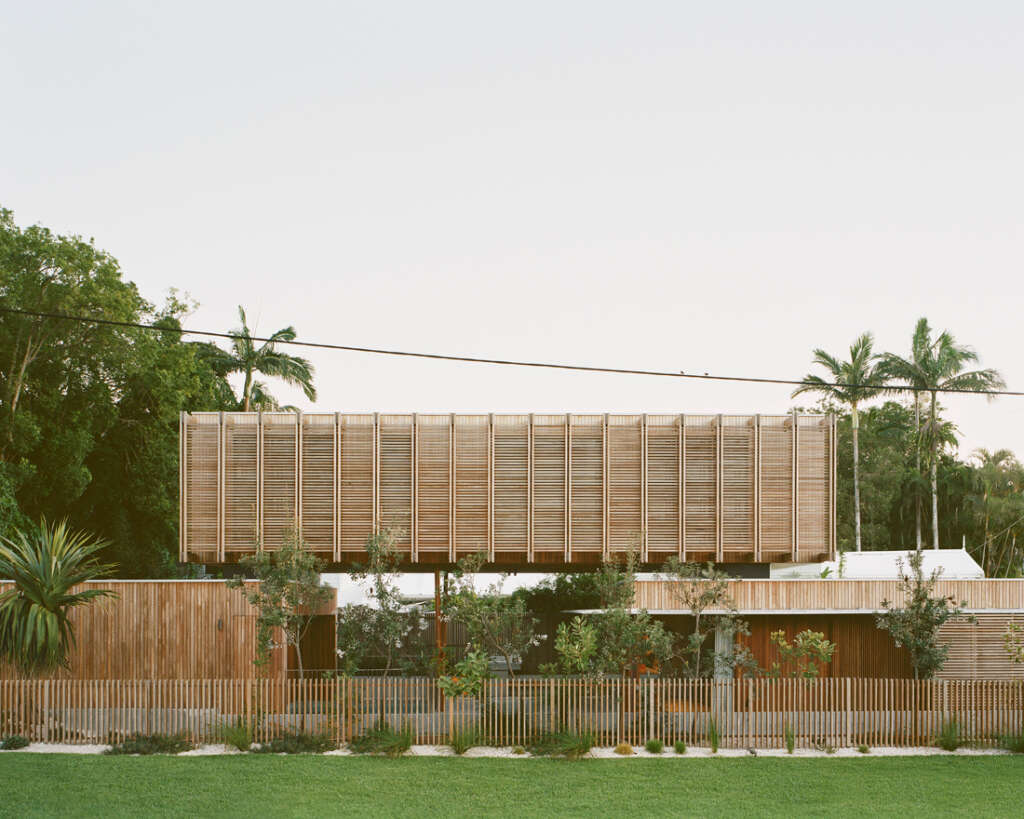
Bangalow Road House
Architect: Son Studio
Location: Byron Bay, Australia
Type: House
Year: 2024
Photographs: Rory Gardiner
The following description is courtesy of the architects. Inhabiting a narrow 360m² corner block in Byron Bay, Bangalow Road House thoughtfully embraces its site constraints to create an efficient, small-footprint family home.
Faced with the sites limited dimensions, the design employs an elevated plan to accommodate the internal floor area requirements for a three-bedroom home. It comprises three rectangular volumes, each serving different programmatic functions. The upper volume accommodates the private areas, with all bedrooms located there, while one lower volume houses the garage and the other contains the living spaces. The stringent height and side boundary constraints of this small site were effectively addressed by the form of a rectangular two-storey structure. However, the design deviates from the conventional two-story form by establishing a visual separation between each volume, allowing the upper volume to float above the two positioned on either side below. This approach not only adheres to prescribed limits but also diminishes the perceived bulk and scale of the building, allowing it to integrate seamlessly with its modest surroundings and present a balanced, proportionate presence within the site.
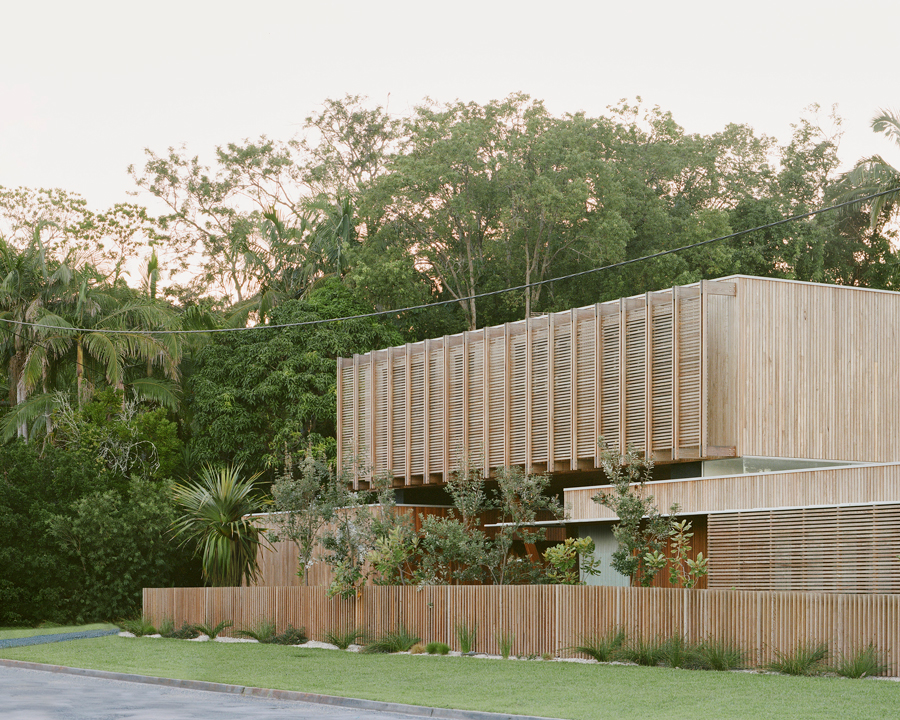
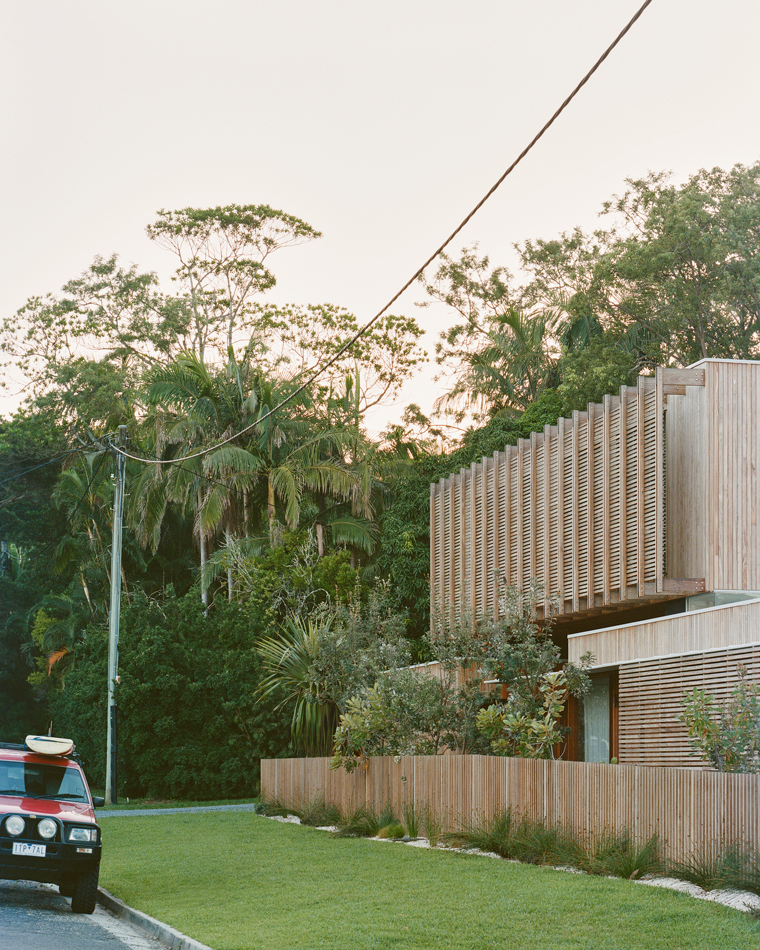
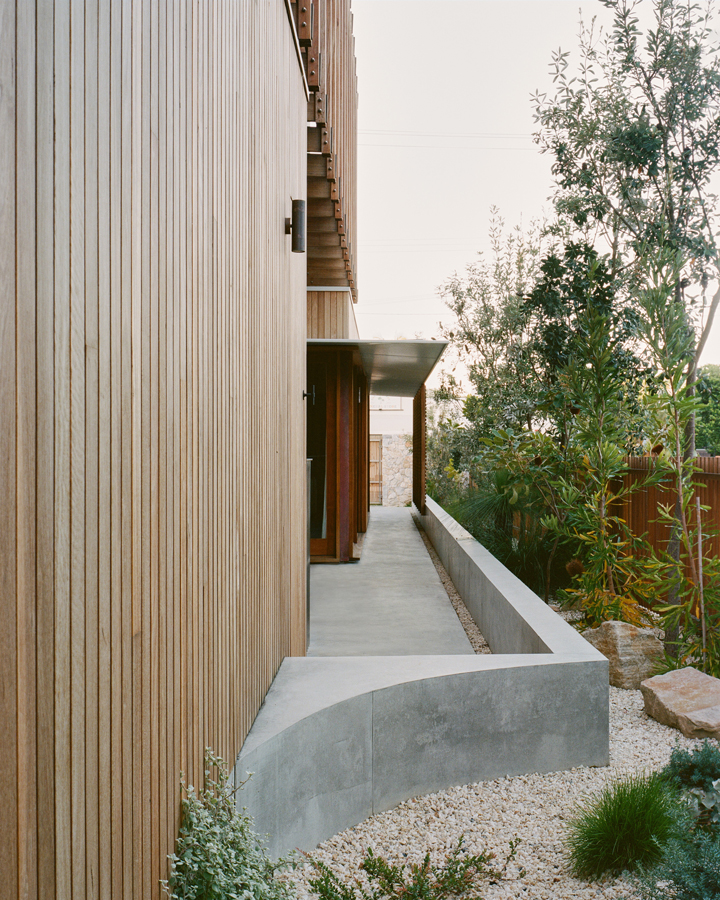
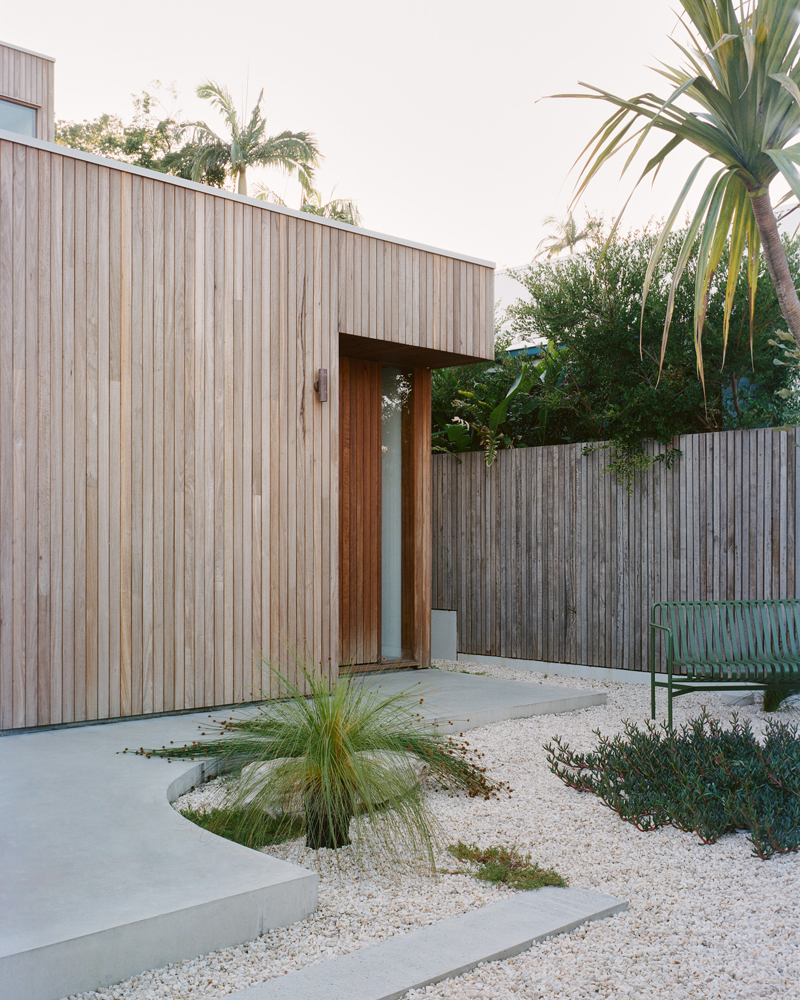
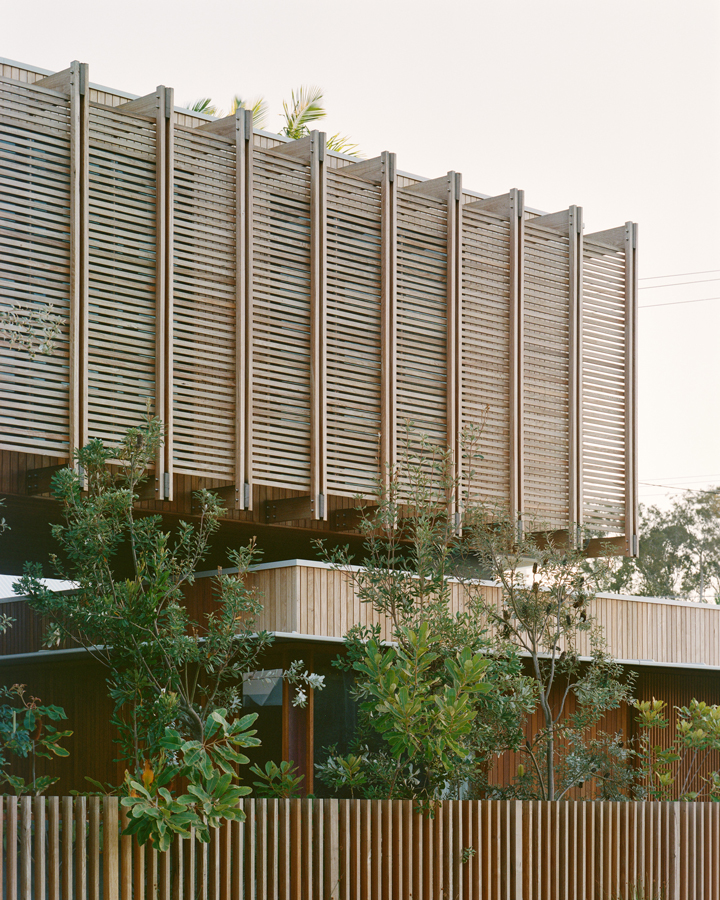
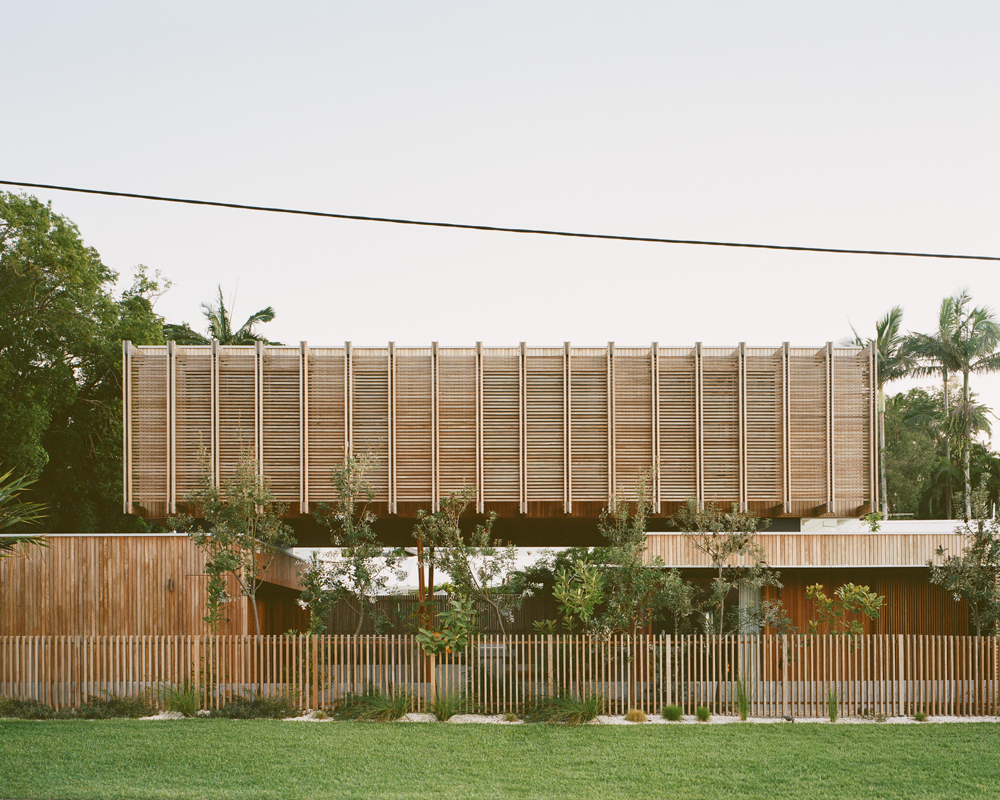
This geometric configuration gives rise to a centrally located courtyard, enveloped and protected by the form of the home. This central courtyard serves as a pivotal element in enabling the home to flow between states of openness and privacy- an important feature when confronted with the proximity of a busy street. When open to the courtyard, the home fosters a social atmosphere and dialogue between interior and exterior environments. When seclusion and privacy are sought, solid openings provide the means to close off the space, ensuring the occupants are shielded from street-view.
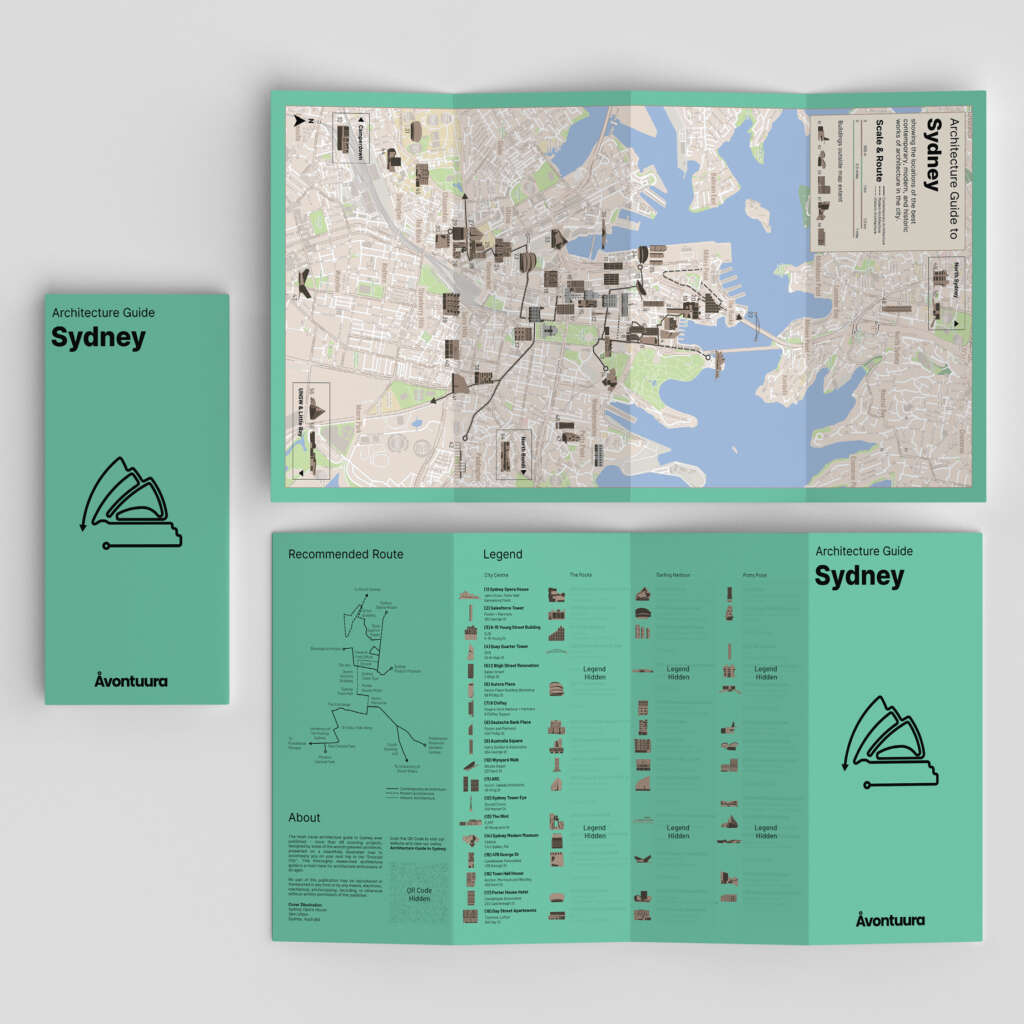
Architecture Guide to Sydney
Explore all our guides at avontuura.com/shop
The narrow corner block dictated an elongated form pushed up tightly against a busy street. Privacy from this street is achieved through the use of screening mechanisms that shield dwellers from outside view whilst inviting an abundance of natural light into the home. Horizontal battens on the upper level provide outward views while effectively blocking street-level sight lines. This approach achieves a delicate balance between openness and privacy and mitigates solar radiation without relying on traditional eaves. The screen, owing to its scale and detailing, integrates with the architecture and serves as an outer skin, diffusing the solid upper-volume and producing a veil-like effect amidst the ever shifting dappled light. An additional layering of screens takes place on the ground floor, forming a threshold, enabling the building to optimise its extended northern aspect whilst allowing for intimate internal spaces.
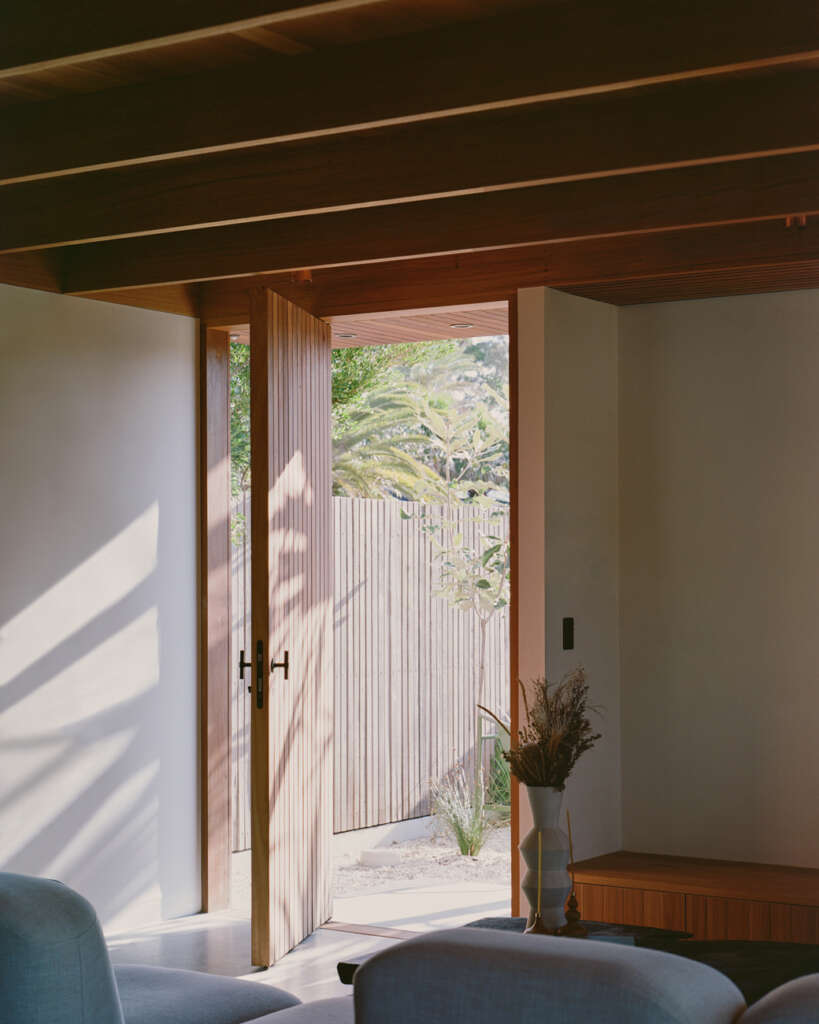

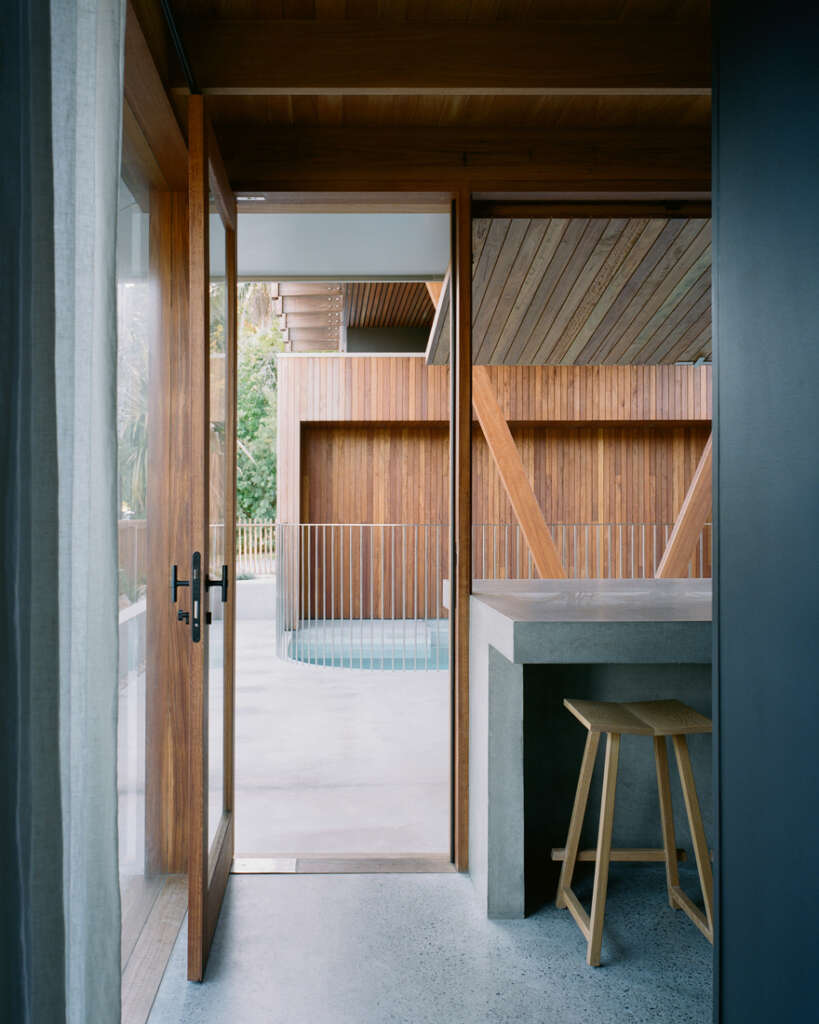
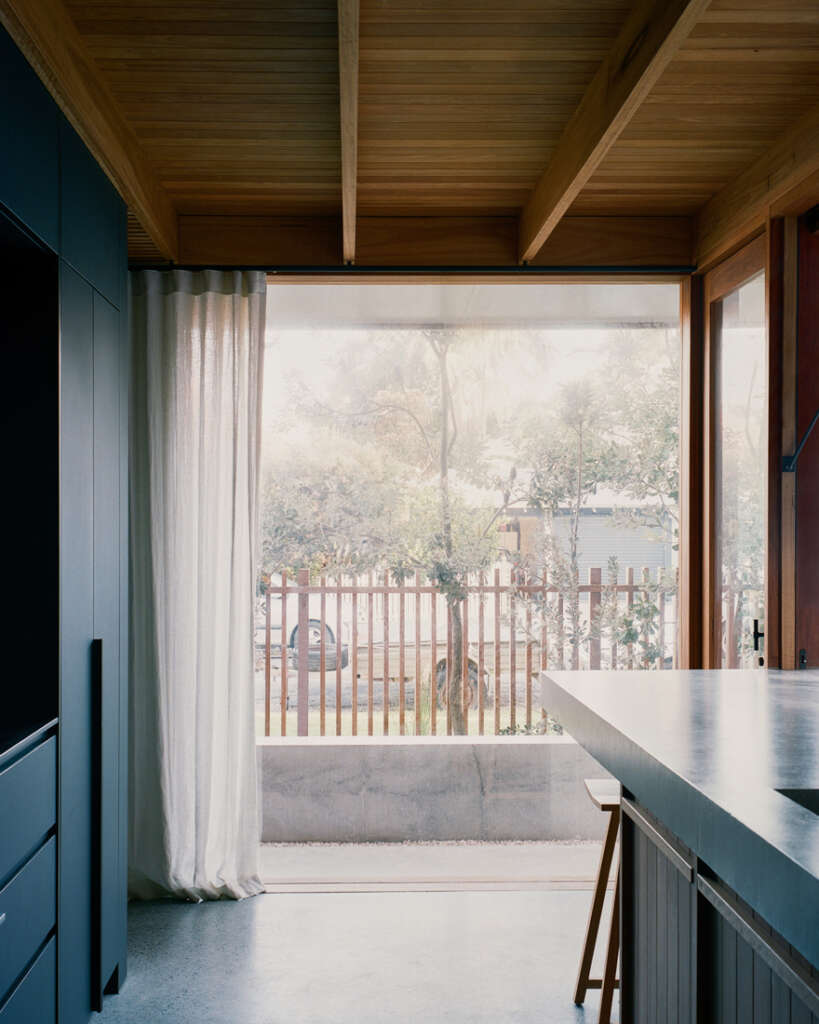
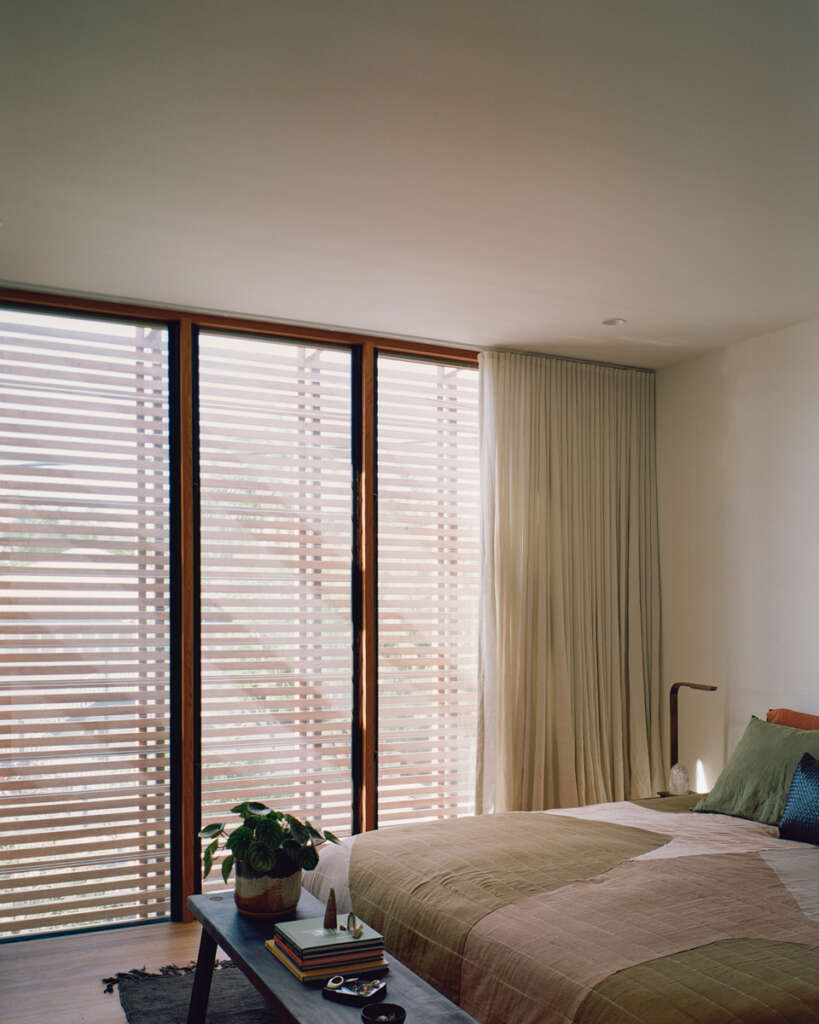
The layering of various timber screening elements not only shields residents from the street but also creates a fluid spatial experience that emphasises the progression of time through the dappled light that filters throughout the home. The curation of vistas via the screening devices transforms the act of looking outwards into a poetic experience, offering varying glimpses of the site, gardens and street- framed differently depending on one’s vantage point. The space encourages curiosity, bringing a heightened awareness and sensitivity to its inhabitants.
A simplified palette of locally and sustainably sourced raw materials aids in minimising carbon miles while anchoring the home and imbuing it with a sense of place. A local native hardwood encases the structure and descends into the interior. Externally, the timber gradually develops a distinctive silver-grey patina, while internally, it retains its warm hue. This transition between indoor and outdoor spaces creates a dynamic experience within the dwelling, forming a visual narrative of sorts- a tactile dance that resonates with the senses.
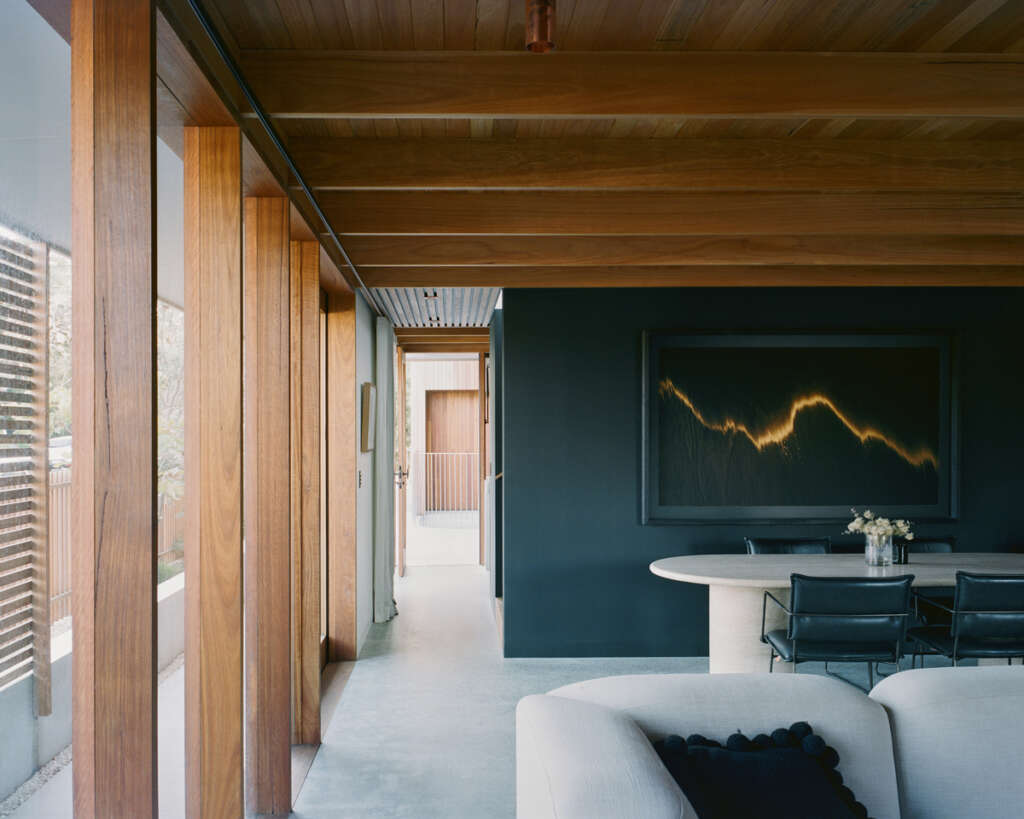
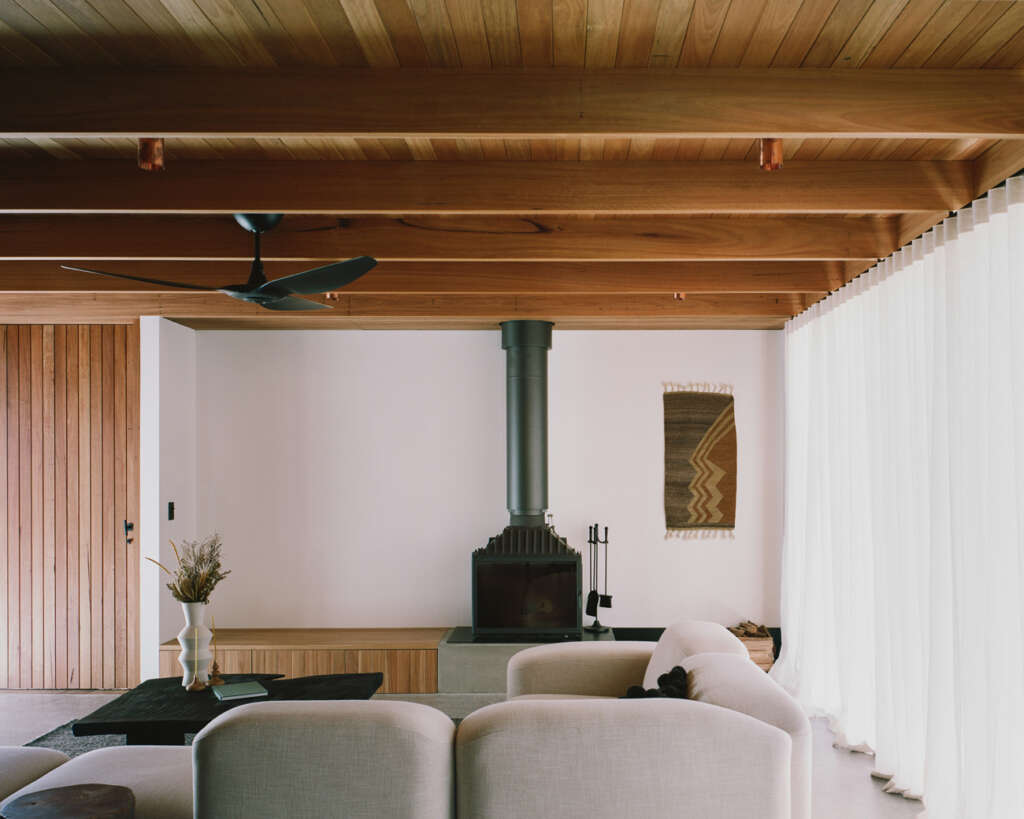
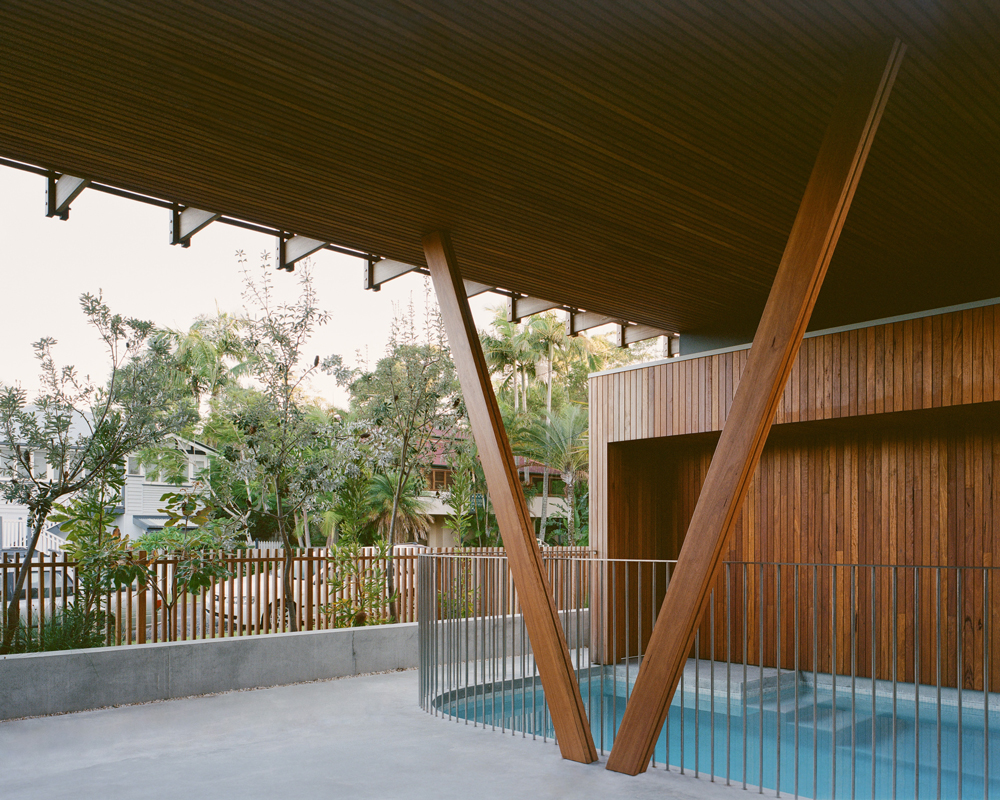
By virtue of its size, the environmental impact of Bangalow Road House is minimised—within just 140m² of internal floor area, this three-bedroom house comfortably accommodates a family-sized brief. Creating a home with a smaller footprint naturally results in less trees cut down, less materials manufactured, less carbon miles to transport them and a reduced amount of energy to heat, cool and maintain the building. Additionally, through the use of photovoltaic panels, a heat pump system largely powered by the (PV) solar electricity system, all-electric appliances (no natural gas) and rainwater tanks we reduce environmental impact, promote energy independence and promote water conservation measures.
Project Details
- Project Name: Bangalow Road House
- Office Name: Son Studio
- Office Website: www.sonstudio.com.au
- Instagram: @son___studio/
- Completion Year: 2024
- Gross Built Area (m 2 / ft 2 ): 180 Sq.M
- Project Location: Byron Bay, NSW
- Program / Use / Building Function: House
- Photographer: Rory Gardiner
- Website: rory-gardiner.com/




